Aquaria
Whenever, we vacation, if there is a beach, we go shelling. The same holds for aquaria. Some aquaria specialize in local fish and some are more zoo-like, containing a large number of beautiful and exotic marine animals from all over the world.
One of my favorite aquaria, Underwater Observatory Marine Park, (https://coralworld.co.il/en/) is in Eilat. There you descend below the surface of the water and view the spectacular fish that inhabit this replica of a Red Sea coral reef.

These are spectacularly colored tropical fish, such as the Yellowtail Tang (Zebrasoma xanthurum) and lionfish (Genus Pterois).

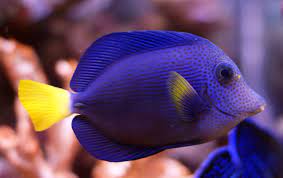
We were recently in Israel and returned to Eilat finding the aquarium even more wonderful. It has been expanded considerably and now includes several surface pools with various types of sea life. My favorite new building is the Rare Fish Aquarium. They even have a huge indoor two –part shark tank with a connecting section over the visitor walkway. You literally have the sharks swimming overhead.
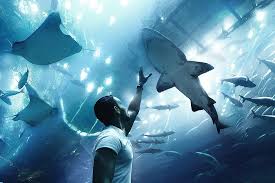
Introduction to Nudibranchs

I recently read a fascinating book – Metazoa by Peter Godfrey-Smith – about possible pathways to the evolution of consciousness ( In the book, I was introduced to many less well-known but beautiful creatures of the deep. Today, I would like to present the nudibranchs (pronounced new-dee-branks), otherwise known as sea slugs. Although I have noticed several passing references to nudibranchs lately, particularly in the Science Times, I really had no idea what they were.
Garden Slugs and Sea Slugs
There are two branches to the slug family , those living on land and those living in the sea. Gardeners frequently find the land slugs munching their way through their plants, leaving a mucus trail behind them. Some of these slugs are colorful but they cannot begin to compete with the sea slugs when it comes to the stunning beauty of body coloration and graceful swimming style.
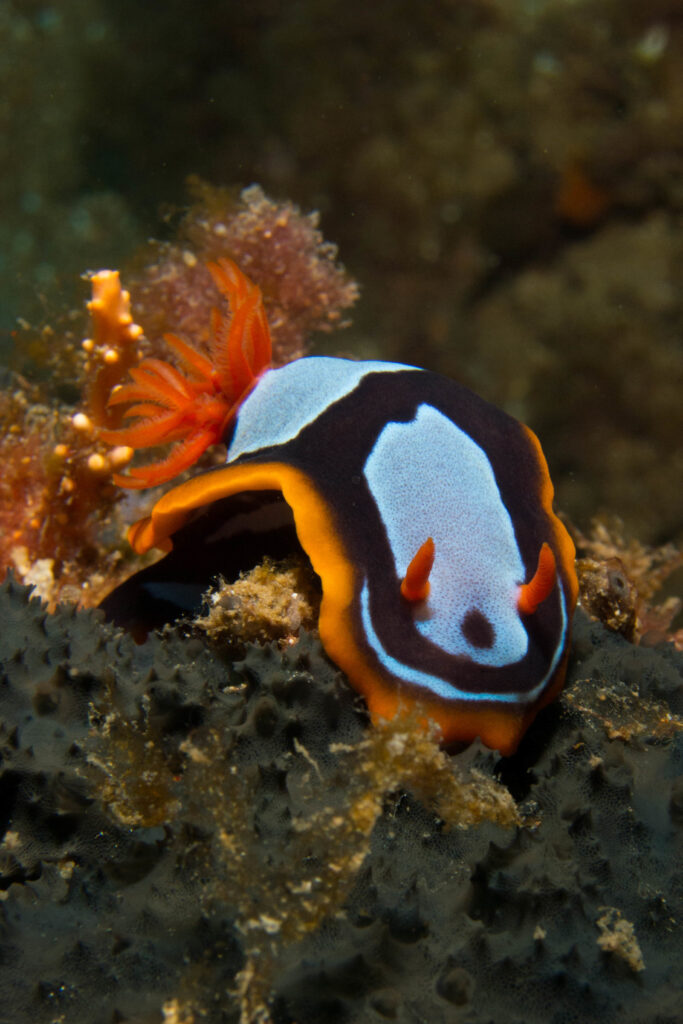
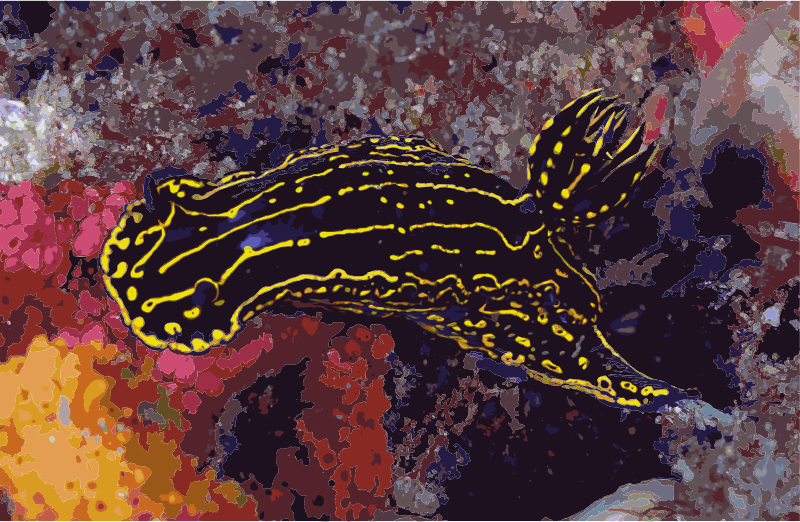
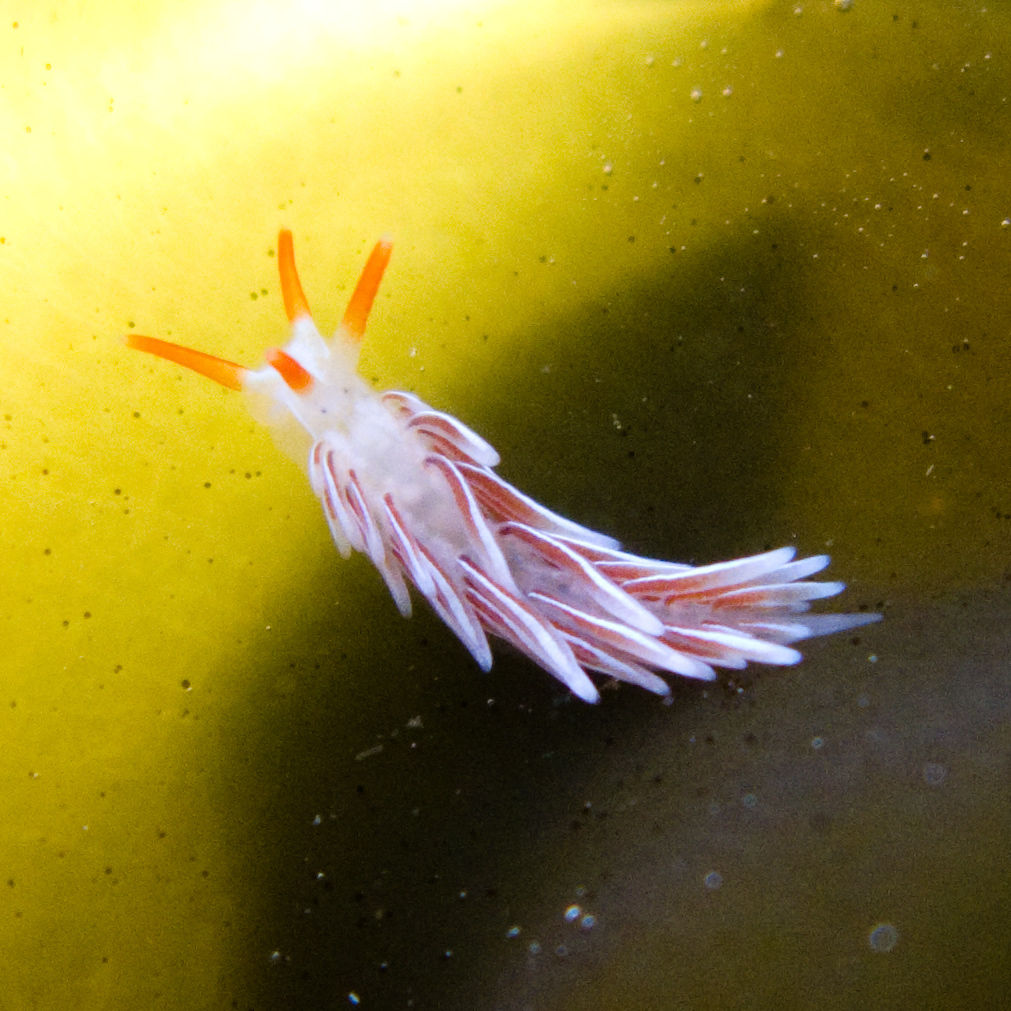
Think of snails that have lost their shells and you have a slug. They are mollusks from the class Gastropoda, Order Nudibranchia, and are divided into two groups the Aeolidida and Doridacea. The name Nudibranch comes from the Latin nudus meaning naked, and the Greek branchia meaning gills.
How Do Nudibranchs Breath?
In the Doridacea the numerous finger-like gills can be found clustered on the animal’s back towards the animal’s rear.
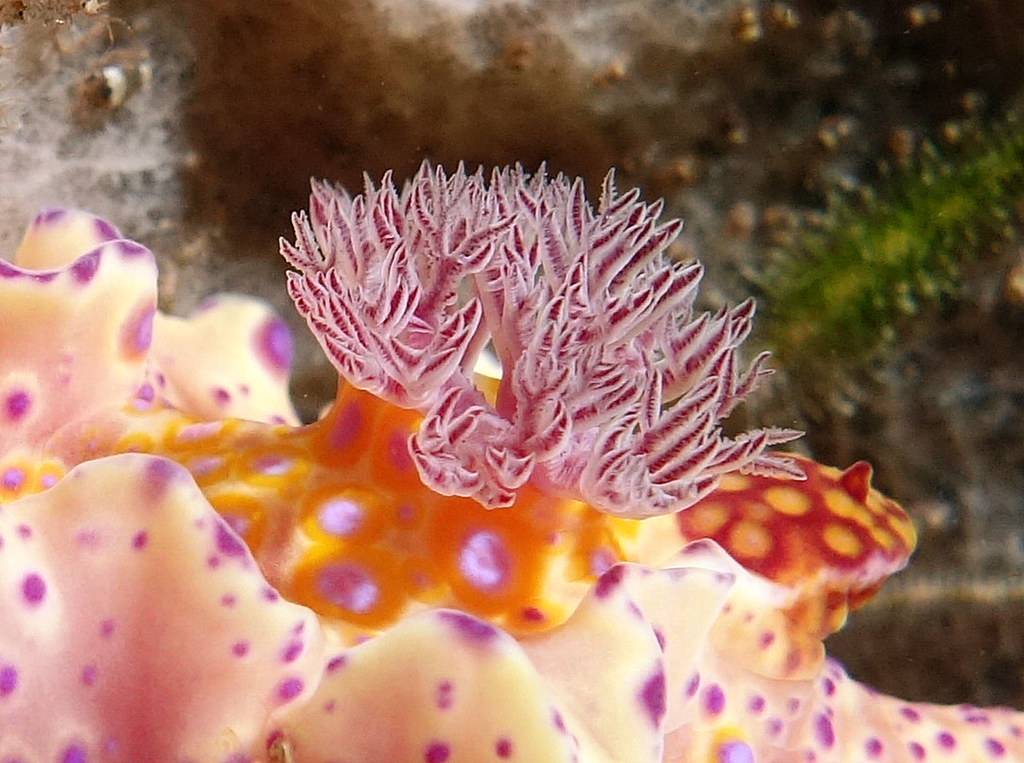
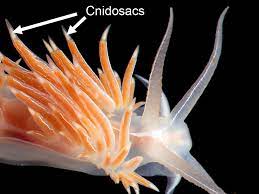
In the Aeolidida, the back is covered with thicker finger-like protrusions called cerata that have multiple functions including breathing.
Another cerata functions is protection using nematocysts derived from their prey animals and sequestered in the cerata. Nematocysts are coiled barbed or venomous structures that can shoot out either for defense or capturing prey.
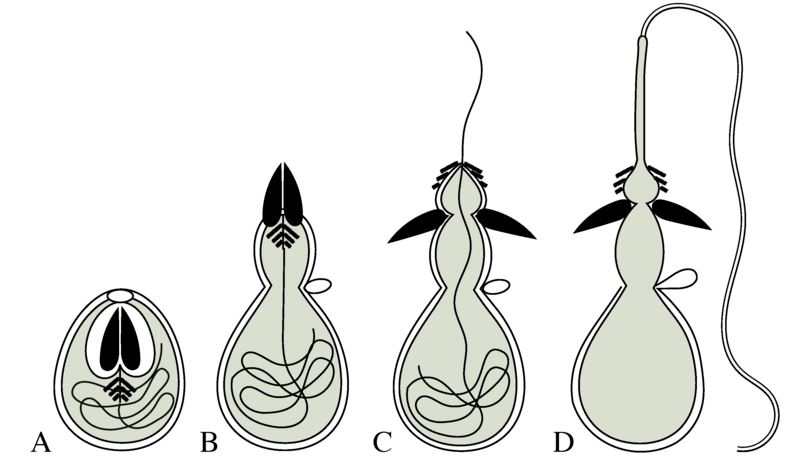
Rhinophores

Another interesting structure are the paired rhinophores found on the top of the sea slug head. The word comes from the Greek, with rhino meaning nose and phore meaning carrier. Looking like two “worms” it is actually an organ of scent. Since they are subject to nibbling by fish, most nudibranchs can withdraw their rhinophores into pockets which can be closed when it is “worried”.
Nudibranchs have bilateral symmetry – symmetric right and left sides. Size within the 3,000 species vary from 0.6-24inches. Most live in marine environments although some inhabit brackish waters. Brackish waters contain far less dissolved salts than seawater and is found where seas meet rivers and the waters mix through tidal movements. Seawater salt concentrations run from 15,000milligrams per liter (mg/l) to 40,000 mg/l. Brackish water has 1,000-1,500mg/l and good drinking water has 50-150 mg/l.
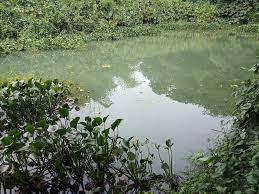
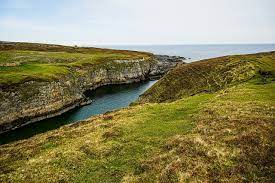
Depending on the species, they can be found in every temperature zone from the Arctic to the topical although the greatest diversity is found in warm, shallow reefs. They are always found on the ocean floor and the depths can vary from the intertidal zone ( where the ocean meets the land between high and low tide) to 8,200ft deep.
Nudibranchs are hermaphrodites, possessing male and female reproductive material. They generally cannot self-fertilize and in romantic encounters, the more dominant of the two acts as the male.
It is seldom that one learns something new that is overwhelming. I am so thrilled to learn about these beautiful creatures.
Protect our World from Climate Change. Be Part of the Solution!
If you have enjoyed this piece, you may like my book, A Habit of Seeing: Journeys in Natural Science.

Wow! I had no idea sea slugs were so beautiful!
I have loved these creatures since I first saw one in a documentary! My sister-in-law is a marine biologist who explained about them. This is such a wonderful topic. I definitely will watch the video.
I always hated the slimy slugs in my garden. These are beautiful. Thanks for opening my eyes
Can they be kept alive in a marine aquarium?
I have no idea but there are many websites online that should be able to help.